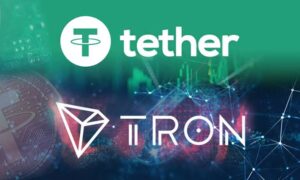
Fidelity Enters the Tokenization Arena: Investigating Stablecoins and Digital Treasury Solutions
Fidelity, a leading global financial services company, is reportedly deepening its engagement with digital assets by exploring stablecoins and tokenized treasury solutions. As the financial industry increasingly embraces blockchain technology, Fidelity’s efforts highlight the growing relevance of these innovations in mainstream finance.
On August 15, ETF Store President Nate Geraci shared on X (formerly known as Twitter) that Fidelity’s digital asset management team is actively assessing the potential of stablecoins and tokenized treasury products. He also noted that the firm is looking into on-chain credit and structured financial products, underscoring the rapid pace of development in this sector.
Fidelity’s Interest in Stablecoins and Real-World Assets (RWAs)
Geraci’s information comes from a report by The Block, featuring an interview with Cynthia Lo Bessette, who leads Fidelity’s digital asset management division. Bessette, tasked with identifying new investment opportunities in the digital assets space, expressed satisfaction with the market’s acceptance of crypto ETFs. She identified stablecoins as a key area where tokenization can deliver significant value and hinted that Fidelity might eventually introduce its own stablecoin.
“We’re evaluating projects already in the market, and stablecoins, as a form of tokenized cash, clearly represent an obvious use case,” Bessette commented.
Bessette also mentioned that after stablecoins, the next step is to explore tokenized treasury products. Additionally, Fidelity is conducting research into other innovative digital financial products, including on-chain credit and structured investments.
The Growing Interest of Major Asset Managers
Geraci emphasized the significance of major asset managers like BlackRock, Franklin Templeton, and Fidelity getting involved in tokenization. He pointed out that these financial powerhouses are not merely experimenting with digital assets but are fully committed to understanding and developing these new technologies.
Geraci remarked, “Those who dismiss tokenization’s value haven’t considered why major players like BlackRock, Franklin, and Fidelity are either involved or looking to be involved. We’re talking about the world’s largest asset managers, and Fidelity even has a dedicated digital asset management division!”
Fidelity’s interest aligns with a broader trend among traditional financial institutions. Earlier this year, BlackRock announced the launch of a tokenized real-world asset (RWA) fund on the Ethereum blockchain, reflecting the increasing integration of blockchain technology in traditional finance.
Growth in Tokenized Treasuries
The tokenization of U.S. Treasuries has seen significant growth this year, with total value locked (TVL) reaching a record $1.92 billion as of August 14, according to RWA.xyz. This marks a 150% increase since the start of 2024, with BlackRock’s BUIDL fund leading the market with $517 million locked, representing 27% of the total market share.
The overall market capitalization of stablecoins is just under $170 billion, reflecting a 28% increase since the beginning of the year. The growth in market cap has been largely driven by the adoption of tokenized treasury products.
RWA analytics highlighted that “the market cap of real-world assets is just below $11 billion today, fueled by tokenized private credit and U.S. Treasury debt.”
Conclusion
Fidelity’s exploration of stablecoins and tokenized treasury products underscores the financial industry’s evolving landscape. As traditional finance continues to intersect with digital assets, the involvement of major institutions like Fidelity demonstrates the transformative potential of blockchain technology. It will be intriguing to observe how these developments influence the future of finance.






